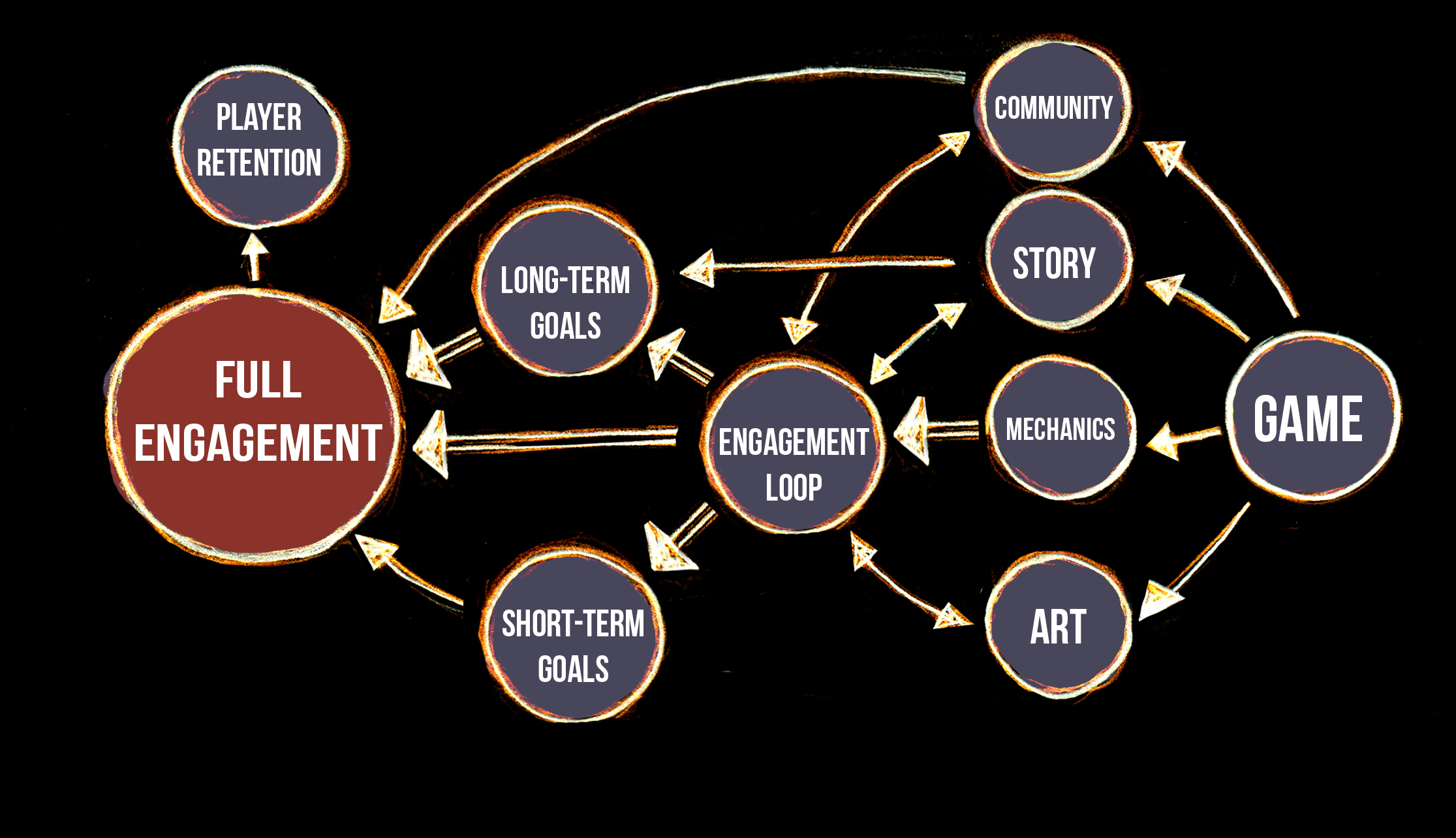Engage
Added on 12 June 2014
By Felipe Lara
Engage your players for the long-term! Just like your parents did! (or not – like my parents who divorced when I was 2) If you engage players long-term you will have more opportunities to convince them to tell their friends, pay for cool extra stuff, subscribe, etc.
Engagement is only one part of the puzzle. To be successful, games need first to stand out and be noticed, then connect with players and engage them, and finally find a way to continue growing their player base. Assuming of course that there is a sustainable business model behind.
Once you connected with your players and got their interest, you need to engage them and keep that engagement going in the long-term.
You can do that with a mix of appealing short-term and long-term goals. But you can rarely do that with a flashy gimmick. You need the right combination of compelling art, fun game mechanics, interesting stories, and good social mechanics. Short term goals are most commonly provided by your game mechanics, character customization, or social interactions. Long-term goals are usually provided by a compelling story that wraps up and gives meaning to the longer experience, or by adding a series of achievements and mastery to your game mechanics.
Ideally it works something like this:
- You got an engagement loop supported by the different elements in your game that provides a compelling mix of short-term and long-term goals.
- The are other aspects like the pleasure of playing with friends and belonging to a larger community that we care about that also provide full engagement.
Engaging your players in the long-term is an essential part of a successful game, but to do that you need to first stand out and be noticed and connect with your players, and then you need to find a way to grow your player base.
The most effective way of developing a game that does these things is by following a player-centric development grouped in three steps:
- Your Fortified Vision which will help you sell your idea, confirm that your core assumptions work with your target players, and serve you as your northern star that guides you through the hectic development process.
- A Prototype of Your Core Engagement Loop where you will figure out the cycle of events that will both keep your players engaged and let you achieve your goals.
- Your Minimum Viable Product focused only on your main loop, and leading players in and out of this loop to allow your game to stand out, connect with players, and grow.
For more information on how can I help you develop a successful game, take a look at my services



